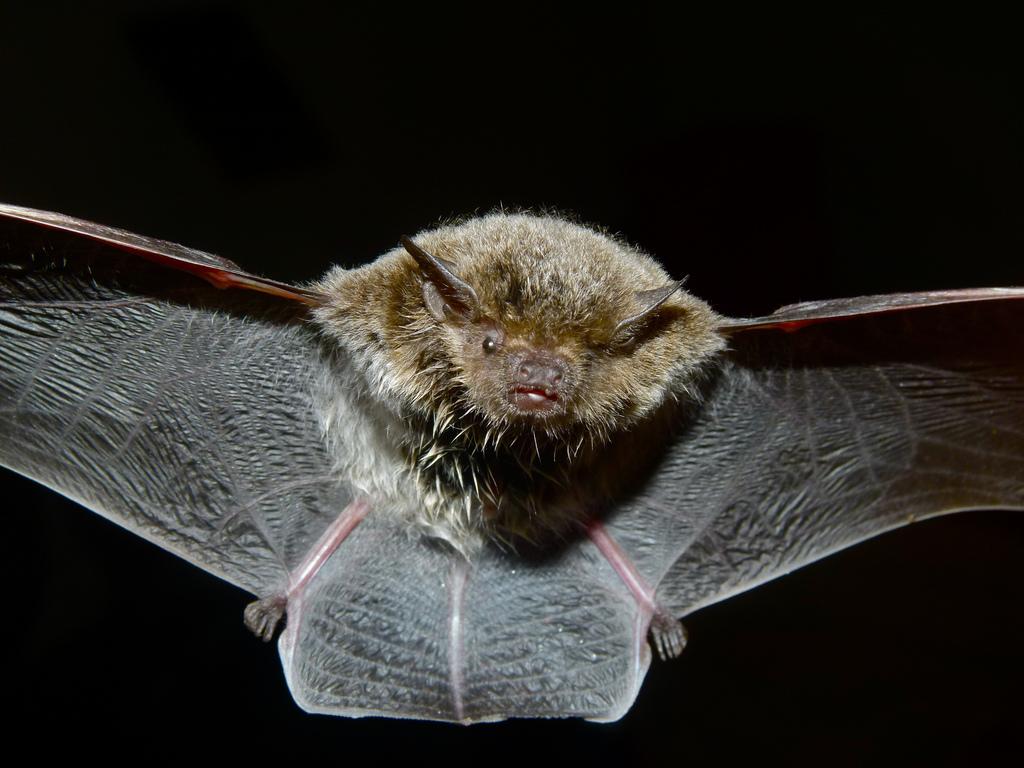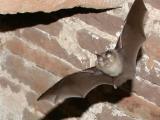The view that MERS-CoV (Middle East respiratory syndrome coronavirus) originated in bats gathered steam today with the report that a new coronavirus (CoV) found in the feces of a South African bat is more closely related to MERS-CoV than any other known virus.
The study, published as a letter in Emerging Infectious Diseases, doesn't solve the mystery of what animal is passing MERS-CoV to humans. But the authors, from the University of Bonn, Germany, and several South African institutions, say the findings suggest that ancestors of the human virus evolved in African bats.
The scientists previously discovered that MERS-CoV is closely related to CoVs found in European Pipistrellus bats. They say their newly discovered virus is genetically much closer to MERS-CoV than the Pipistrellus viruses are.
13 bat species tested
In 2011 and 2012, South African members of the team, led by Wolfgang Preiser of Stellenbosch University, gathered fecal pellets from 62 bats of 13 different species in the KwaZulu-Natal and Western Cape provinces of South Africa. In testing that targeted a segment of a coronavirus gene called RdRp, they found that 5 of the 62 samples were positive for CoVs.
Further testing identified four of these viruses as alphacoronaviruses. The fifth specimen yielded a novel betacoronavirus, the group to which MERS-CoV belongs. It came from a female Neoromicia cf. zuluensis bat.
The scientists say they then analyzed a larger fragment of the RdRp gene from the virus, which they dubbed PML/2011, and discovered that it differed from the corresponding piece of MERS-CoV by only one amino acid exchange, or 0.3%. "Thus, PML/2011 was much more related to MERS-CoV than any other known virus," they write.
Specifically, the amino acid sequence of the CoV from Pipistrellus bats differed from MERS-CoV by 1.8%. The sequences of viruses from Nycteris bats in Ghana and two bat CoVs in China differed from MERS-CoV by 5.5% to 7.7%.
The scientists also say that a phylogenetic analysis of the RdRp sequence showed that the relationship between PML/2011 and MERS-CoV is as close as that between the SARS (severe acute respiratory syndrome) coronavirus and its closest known relative in bats.
The close relatedness of MERS-CoV and PML/201 "enables speculations of an African origin for bat reservoir hosts of MERS-CoV ancestors," the letter states.
The authors caution that their findings are based on a very limited number of bats and just one viral isolate. On the other hand, they say other viruses have made the journey from Africa to the Arabian Peninsula—one example being the Rift Valley fever virus, which led to a severe outbreak in Saudi Arabia in 2000.
The letter concludes that further studies of bats and of potential intermediate hosts of MERS-CoV, such as camels, are urgently needed to determine how the virus emerged.
CDC testing Saudi samples
In other developments, the US Centers for Disease Control and Prevention (CDC) is conducting serologic tests on samples from contacts of a MERS-CoV patient in Saudi Arabia, after waiting months to receive them, CDC officials told CIDRAP News.
Serologic tests are used to detect antibodies indicating past exposure to a disease. They can help determine the extent of mild or asymptomatic infections that went undetected.
Capt. David Swerdlow of the US Public Health Service said the CDC received the last of a batch of samples from the Saudi Arabian Ministry of Health on Jul 19.
"The samples were collected from contacts of a confirmed case that occurred there in October 2012. Currently, CDC laboratory staff are conducting serological tests on the samples and the results will be provided to the health ministry of the Saudi Arabian government," said Swerdlow, the CDC's incident manager for MERS activities.
CDC spokesman Jason McDonald said yesterday that the samples were held up while the CDC and Saudi Arabia negotiated a material transfer agreement. Officials declined to give any details on what the agreement specifies.
A CDC official had voiced frustration in early June about the delay of the samples, according to a media report at the time.
Ithete NL, Stoffberg S, Corman VM, et al. Close relative of human Middle East respiratory syndrome coronavirus in bat, South Africa. Emerg Infect Dis 2013 (published online Jul 23) [Full text]
See also:
Related Jul 24 University of Bonn press release
Jun 7 CIDRAP News story mentioning delay of Saudi samples




















